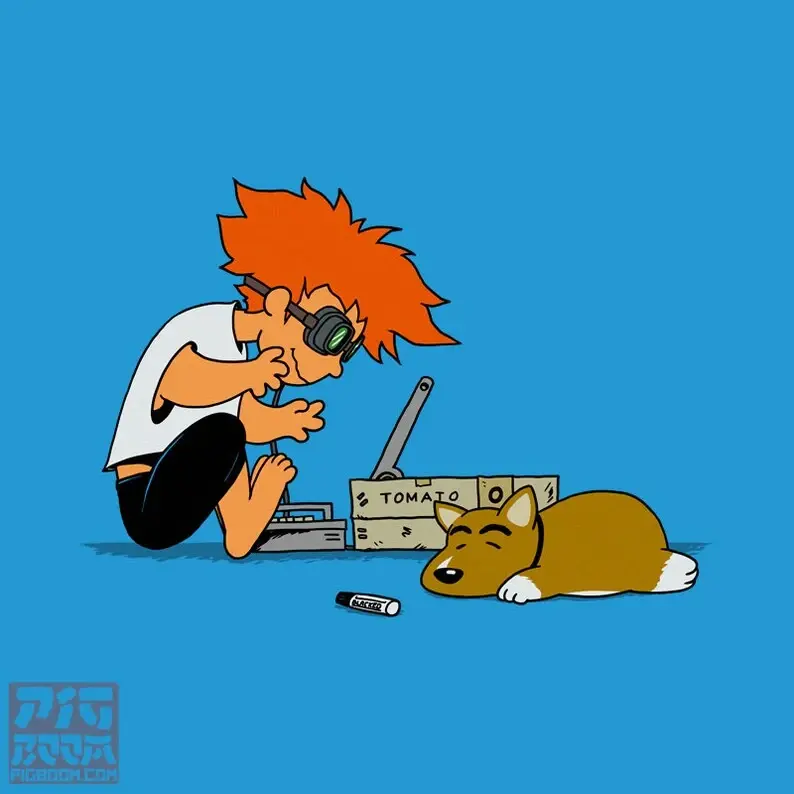cross-posted from: https://beehaw.org/post/6846019
I should really start doing regular backups again, do the 3-2-1 backup strategy again, and organize my backups but there’s so many files and stuff on my devices and external drives that it’s overwhelming and I don’t know how to properly sort it. ADHD kicks my ass too and I know that it takes a while to backup and that means my computer needs to idle so it can get done faster and doesn’t slow my computer down.
Also, I’m struggling with cloud backups too. Google Drive and OneDrive often had errors in the middle of uploading and I’m hesitant to spend money on a cloud service. And doesn’t Backblaze need you to have your device connected at least once every 30 days or your data will be deleted or something? I have ADHD and I can’t guarantee I’ll be on top of that. And do I upload image backups to these servers? Is that even possible? What about video game backups and other large files? Or all the videos I have? Aren’t these cloud services really slow as well? I feel like I’ll end up having the same problem…I could use zip files, but I keep worrying something will get removed in the middle of it.
And how do I check backups? I can’t reasonably check every single file I’ve ever made.
I don’t know how to handle all of this. I mainly use FreeFileSync for copying drives over with anything being overwritten just being moved to a Revisions folder. I also sometimes use Macrium Reflect for image backups, but the free version is being retired… I tried Veeam once but it didn’t backup the AppData folder when I tried doing a file level backup about a year ago.
I have a Mac and a Windows computer by the way. I do want to check out Linux someday though.
I don’t know if I can do a NAS either. I don’t think I have an extra computer lying around and I’m a college student who needs to travel from home to my college campus. And I don’t have a lot of room on my bedroom desk…And I hate how backups often prevent me from using one of my computers.
For Mac my backup system is a big Time Machine hard drive for local backup plus Backblaze for offsite backup. Backblaze personal backup is automatic, it just backs up most things on your computer. It doesn’t do everything, skipping things like Applications and system files, but those are recoverable other ways than from offsite backup. Backblaze needs to see your computer once every 6 months, and any external hard drives you’re backing up every 30 days. The initial backup can be a bit slow, but limited by your upload speed (mine was in progress for ~1 month until I upgraded my internet to fiber and it finished overnight) but after that it only uploads deltas saving on time and bandwidth. For me, between Time Machine and Backblaze I have enough piece of mind to not really worry about the backups.
Yes, exactly. You can also schedule your backups to take place overnight. Once you have software doing it for you, it can be pretty out-of-sight-out-of-mind.
As mentioned above, mark certain things like software that can be reacquired to be omitted from online backup to save bandwidth. No reason to exclude software on Mac from your local backups, as that can save a lot of time in case of a complete loss due to hardware failure, theft, etc.
Backblaze needs to see your computer once every 6 months, and any external hard drives you’re backing up every 30 days.
I have ADHD so this is the part that concerns me the most.
I’m also a bit worried about the time it’ll take. Especially since I have quite a bit of stuff to back up and I don’t want to have my computer and drives running for days, and I don’t want to feel like I can’t use my computer in that time period.
Pretty much exactly my problem… Any given file could be on my laptop’s internal SSD, one of the partitions of my external HDD or one of a few concerningly old USB flash drives or loose SD cards. I have no idea if I have too few or too many duplicates. Meanwhile my router has NAS functionality built in so I could just buy a 4TB drive, put it in a USB adapter and plug it in but I’ve been lazy.
Hey,
For me, I grew up using operating systems and hardware that weren’t as stable as they are today, so I’ve always kept important, valuable data stored externally. Originally I used solutions like Dropbox for this, and now more recently I’m using a local NAS that backs up to a cloud storage provider. For this reason I’ve never bothered with PC snapshots, and content that if things go wrong with my laptop/PC, I can just do a fresh install. I realise that approach won’t suit everyone but thought I’d share so you’re aware of it as an option.
In regards to a high-level strategy, I think the very first thing you need to do is evaluate and categorise your data into two categories:
-
Data that absolutely must be backed up.
-
Data that would be nice to have backed up, but you can live without if the worst happens.
I’d then recommend setting up a solution that you can then immediately start using to store data that fits into the first category I’ve listed above. Once you have that in place, you can then, over time (because these things do take time), start shifting existing data that fits into Category 1, over to this new setup.
Unfortunately, as we don’t have much context as to the volume of data you have acquired for each of those categories, and your budgetary contraints, it’s difficult to recommend a specific solution. However based on what you’ve shared so far, if I was in your position, I would find a way of acquiring a large, external, high-speed USB SSD drive for each category. I would then look at a cloud storage provider that offers their own sync-client that’s available on Windows and Mac (and Linux if you’re thinking long-term), e.g. Dropbox, Mega, OneDrive etc. I would then configure the sync-client to to read/write from the Category 1 external USB drive whenever you have it connected to you laptop/PC.
The Category 2 data would live solely on its own USB drive without any cloud backup.
A more ideal setup, if you’re willing to get your hands dirty and deep-dive into the world of self-hosting, would be to save up for something like a Dell optiplex PC. Set this up at home with something like Nextcloud so that you can have your data sync between you Windows, Mac and Nextcloud server. And then, depending on the configurability of your home router, set up a Wireguard or OpenVPN server on the optiplex so you can VPN to your Nextcloud server from your laptop when you are away from home.
I hope the above isn’t too overwhelming, and there are many more options available. Prioritise distinguishing the two categories of data, get an idea of the volume, and then perhaps the community can steer you towards a solution that ticks all your boxes.
All the best!
-
Data that absolutely must be backed up.
-
Data that would be nice to have backed up, but you can live without if the worst happens.
I’d then recommend setting up a solution that you can then immediately start using to store data that fits into the first category I’ve listed above. Once you have that in place, you can then, over time (because these things do take time), start shifting existing data that fits into Category 1, over to this new setup.
That is a really good way to break things down. My folders of modded games take quite a bit to backup. I can probably skip the files of the mods themselves for a while because while they’d be nice to have because it’s a pain to redownload them, I can live with having to redownload them.
A more ideal setup, if you’re willing to get your hands dirty and deep-dive into the world of self-hosting, would be to save up for something like a Dell optiplex PC. Set this up at home with something like Nextcloud so that you can have your data sync between you Windows, Mac and Nextcloud server. And then, depending on the configurability of your home router, set up a Wireguard or OpenVPN server on the optiplex so you can VPN to your Nextcloud server from your laptop when you are away from home.
I’d like to explore self-hosting someday and I’ve heard good things about NextCloud, but doesn’t this kind of defeat the purpose of having a cloud backup since I’d want it to be offsite?
Hey,
I’d like to explore self-hosting someday and I’ve heard good things about NextCloud, but doesn’t this kind of defeat the purpose of having a cloud backup since I’d want it to be offsite?
Yes and no. The data stored on your self-hosted NextCloud instance can always be backed up to a remote repository - I’d suggest looking at a fantastic tool called Rclone which can potentially serve this purpose.
Based on your requirements as I understand them, a hybrid solution is probably going to serve you best so that you have low-latency, local access to the data as you need it, while keeping and backing up to a remote repository regularly.
Hope this helps and all the best :)
-
-
What sort of things are you backing up? I use TimeShift (on Linux, similar to windows restore afaik) to backup up my computer configuration, and manually backup media files (timeshift only does config) all to a single external drive. Of course that’s a point of failure, but I don’t really mind since most of the things I’d want to preserve are still available online (p2p) with few exceptions; personal pictures, rare albums, etc.
I don’t really have anything to say about Windows since I haven’t used it in more then a decade, but I really have no complaints about Linux. If you need help switching over feel free to ask me questions in this thread or pm. There’s also a lot of good info over on https://askubuntu.com/ or https://www.linuxquestions.org/.
The first thing I would consider is just buy 3 large USB3 drives. Make certain you plug them into a USB3 port so it is fast as possible. I would get spinning drives not SSDs.
Then I would just rotate the backups to get 3 copies of various ages. Keep one off site at all times either one of the 3 or add a fourth drive. I would encrypt the media too.
The above works pretty well if you total backup set can fit in one USB drive. Not sure the latest drives now. I think I have seen at least 6TB drives.
One can do the same thing too with hot mount SATA drives too which is even higher bandwidth and storage if your using a workstation with hot mount slots.




